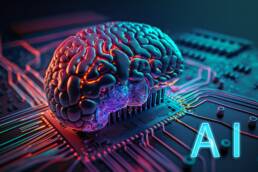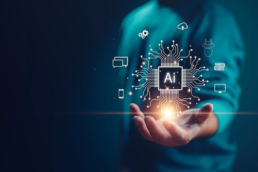Generative AI is a burgeoning field that has captivated the minds of researchers, artists, and technologists alike. By harnessing the power of machine learning, generative AI models are capable of producing novel and original works that transcend the limitations of human imagination.
While the term “generative AI” may conjure up images of whimsical art installations or captivating musical compositions, the potential applications of this technology extend far beyond the realm of aesthetics. Generative AI has the potential to revolutionize a wide range of industries, from drug discovery to materials science.
At its core, generative AI is concerned with the creation of new data. By learning from vast datasets of existing content, generative models can identify patterns and relationships that would be difficult or impossible for humans to discern. This ability to learn from data enables generative models to produce outputs that are both novel and grounded in reality.
One of the most striking features of generative AI is its ability to capture the nuances of human creativity. For example, a generative model trained on a dataset of paintings can produce new works that exhibit the same stylistic flourishes and emotional depth as the works of renowned artists. Similarly, a generative model trained on a dataset of musical compositions can produce new pieces that are both original and evocative.
The ability of generative AI to capture the nuances of human creativity is not limited to the realm of art. Generative models can also be used to create realistic simulations of natural phenomena. For example, a generative model can be used to create a virtual world that is indistinguishable from the real world. Such simulations can be used for a variety of purposes, such as training pilots or testing the safety of new drugs.
In addition to its ability to produce creative and realistic outputs, generative AI also has the potential to solve real-world problems. For example, generative models can be used to design new drugs, materials, and even software programs. By exploring the vast space of possible solutions, generative models can identify promising candidates that would be difficult or impossible for humans to find.
As generative AI technology continues to develop, we can expect to see even more innovative and groundbreaking applications emerge. Here are a few examples of the potential impact of generative AI:
- Personalized education: Generative AI can be used to create personalized learning experiences that are tailored to the individual needs of each student.
- Drug discovery: Generative AI can be used to design new drugs and therapies that are more effective and have fewer side effects.
- Materials science: Generative AI can be used to design new materials with desired properties, such as strength, lightness, and durability.
- Fashion and design: Generative AI can be used to create new and innovative designs that are both stylish and functional.
- Entertainment: Generative AI can be used to create new forms of entertainment, such as virtual worlds and interactive experiences.
The potential of generative AI is vast and limitless. As we continue to explore the capabilities of this technology, we can expect to see it have a profound impact on our world.
However, it is important to note that generative AI is not without its limitations. One of the key challenges facing generative AI researchers is the issue of bias. Generative models are only as good as the data they are trained on. If the data is biased, then the generative model will also be biased. This is a particularly important issue in areas such as healthcare and criminal justice, where bias can have serious consequences.
Another challenge facing generative AI researchers is the issue of interpretability. It can be difficult to understand how a generative model arrived at a particular output. This can make it difficult to trust the outputs of generative models, especially in high-stakes applications.
Despite these challenges, generative AI is a rapidly growing field with the potential to revolutionize many aspects of our lives. As we continue to develop and refine this technology, we can expect to see it have a profound impact on the world.




